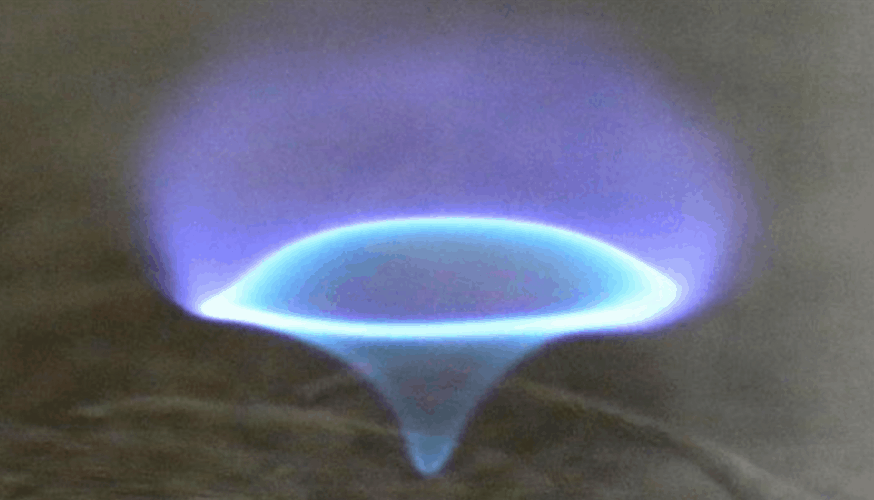
When spills occur at sea, oil is often corralled into thick layers on the surface and then burned. According to the researchers, however, the result is an inefficient and smoky fire with high levels of emissions. Even when yellow fire whirls occur, they don’t burn fuel at maximum efficiency, their colour indicating a lack of oxygen.
“The yellow colour is due to radiating soot particles, which form when there is not enough oxygen to burn the fuel completely," said Maryland engineer Elaine Oran, co-author of the paper, which appears in Proceedings of the National Academy of Sciences. "Blue in the whirl indicates there is enough oxygen for complete combustion, which means less or no soot, and is therefore a cleaner burn."
The researchers discovered the blue whirl while studying the combustion dynamics of fire whirls on water, something they claim hadn’t been done before for practical applications. While creating the vortices in a lab is challenging, instigating them at sea would be even more difficult, and potentially extremely dangerous. But if they could be controlled, they would provide a much cleaner method of dealing with surface oil than currently exists.
“If we can understand it, then maybe we can control and use it," said Michael Gollner, assistant professor of fire protection engineering and Maryland and co-author of the paper.
"Fire whirls are more efficient than other forms of combustion because they produce drastically increased heating to the surface of fuels, allowing them to burn faster and more completely. In our experiments over water, we've seen how the circulation fire whirls generate also helps to pull in fuels. If we can achieve a state akin to the blue whirl at larger scale, we can further reduce airborne emissions for a much cleaner means of spill clean-up.”




Red Bull makes hydrogen fuel cell play with AVL
Formula 1 is an anachronistic anomaly where its only cutting edge is in engine development. The rules prohibit any real innovation and there would be...